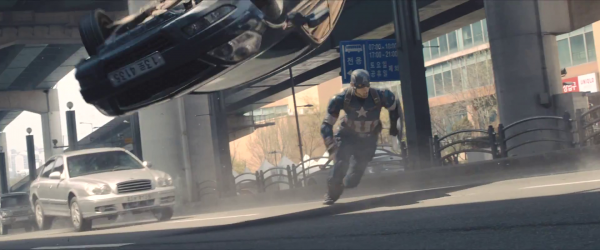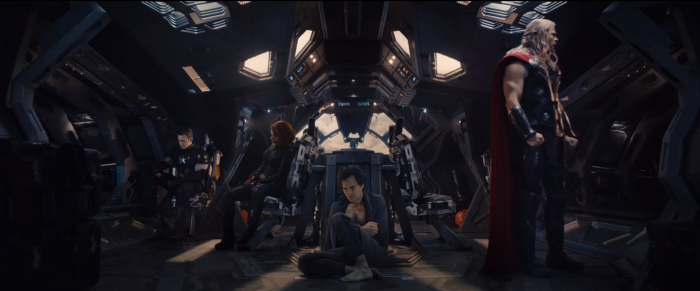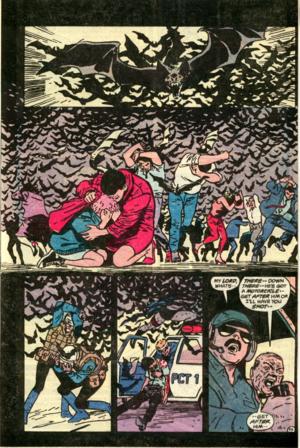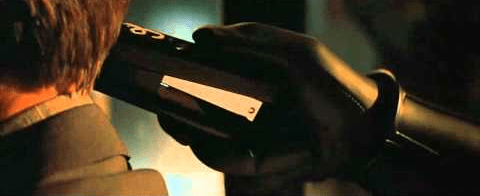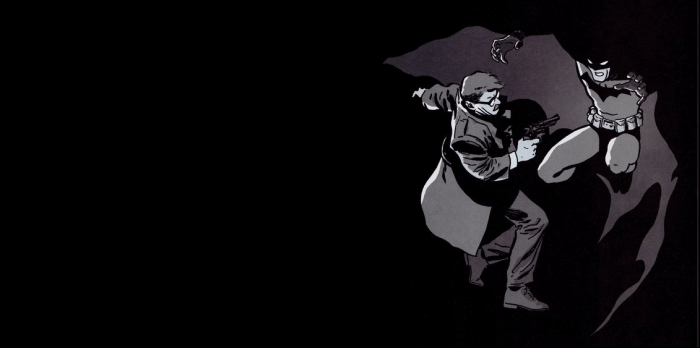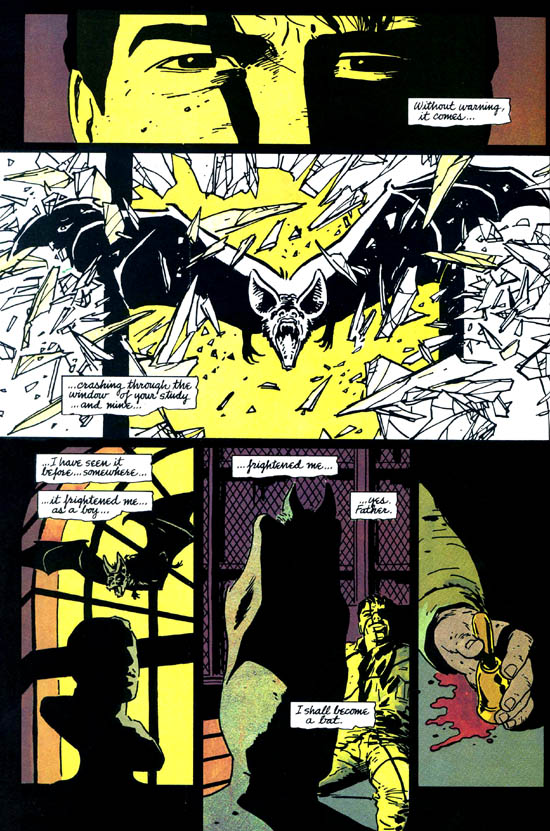 (And they’re not just action scenes!)
(And they’re not just action scenes!)
Batfleck Vs. Superman (also known by the silly title ‘Batman V. Superman: Justice Begins’) is still over a year away with a scheduled release date of March 25th, 2016. In the meantime, I think we should all take a step back to admire the greatest comic book movie of all time; Christopher Nolan’s 2008 film ‘The Dark Knight.’

I wanted to do the top 5 scenes of the entire ‘Dark Knight Trilogy,’ but that was too limiting as there are too many fantastic scenes in my ‘The Dark Knight Trilogy’ to cover here. I couldn’t even narrow just ‘The Dark Knight’ down to 5 favorite scenes. I need 6 to do the job!
Without further ado, here are the top 6 scenes from ‘The Dark Knight’ in the order they happen in the film’s narrative.
1. The Heist
The Bank Heist is quite the little scene to open and therefore establish the tone of the 2nd movie in Nolan’s Batman Saga. Inspired heavily by the Michael Mann film ‘Heat,’ the scene twists a classic heist into the Joker’s (Heath Ledger) plot, all while setting you on complete edge using the heights of IMAX and the sharp cords of the Joker’s theme… all screaming “Chaos.”

2. Decent Men In An Indecent Time
The Joker’s heist may kick off the movie, but it is a decision made by three men that really set events in motion.
To defeat Gotham’s biggest recognized problem, the mob, Harvey Dent (Aaron Eckhart), Lieutenant James Gordon (Gary Oldman), and Batman (Christian Bale) make a pact that will dictate the fate of all three involved, as well as collateral damage of Rachel Dawes (Maggie Gyllenhaal).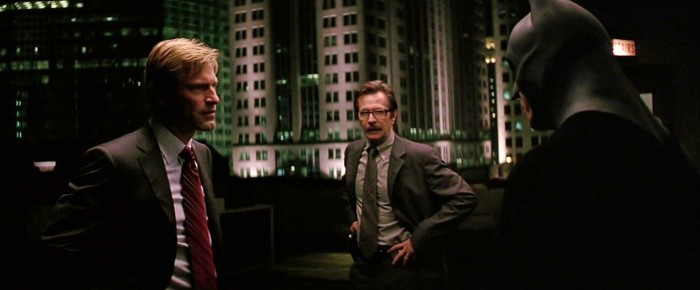
Gordon warns,
“We’re going after the mob’s life savings. Things will get ugly.”
Replies Dent,
“I knew the risk when I took this job, lieutenant.”
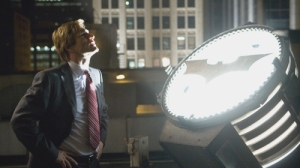 Dent accepts the risk willingly, as do Batman and James Gordon.
Dent accepts the risk willingly, as do Batman and James Gordon.
It is this pact that will determine the destiny of all three men; destroying them all by the end of the film.
3. Dent’s Dark Side
‘The Dark Knight,’ specifically the scene just covered, is largely based on my favorite graphic novel ‘The Long Halloween’ by Jeph Loeb and by Tim Sale.

In the comic, Dent’s dark side is hinted at early in the story; long before the accident that scars him. Let’s just say he may may have done more than take a henchmen down an alley and flipped a coin to decide his life. But we’ll get to that now.
Dent spends half the movie as Gotham’s “White Knight,” the honest and law-fairing District Attorney bringing hope to Gotham. I would argue that Dent’s dark side is introduced too late in the movie; around the hour mark. Even here, the film form is not as severe as his comic version. Hell, ‘Gotham’ showed Dent’s short fuse in the first episode introducing the young assistant D.A.
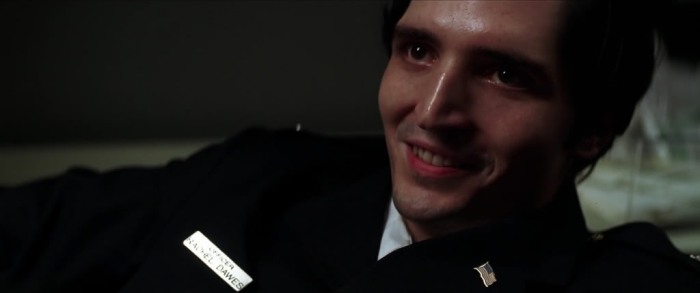
The 1st sign something is amiss with Gotham’s White Knight is when he interrogates Joker’s henchmen Shiff Thomas; the man wearing the name tag pegging “Rachel Dawes” as the Joker’s next victim.
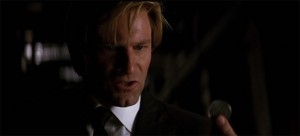
Thomas gets the ‘ole coin flip multiple times, gun held to his head, until Batman stops Dent. The Dark Knight warns the D.A. that if anyone saw what Dent was doing, faith in the White Knight and Gotham would fail.
Even going off the cuff, Dent left the fate of Shift Thomas to his double-sided coin. He (likely) meant Shift Thomas no terminal harm.
Still, that Dent darkness has to appear somehow.
4. Batman Interrogates The Joker
Batman’s one rule comes back to bite him in the ass. By a rabid dog chasing cars.
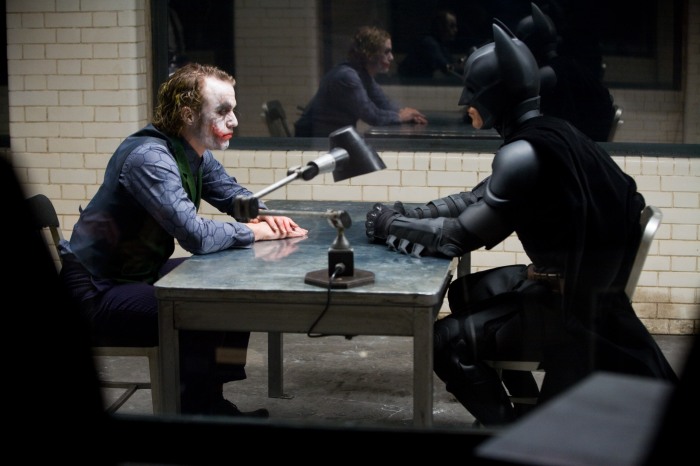
It’s really hard not to love this scene. Though Batman has the Joker in his gauntlets, Joker has all the power.
“You have NOTHING! Nothing to threaten me with. Nothing to do with your strength.”
 It really is powerful to watch Batman wail on Joker to no avail. His “one rule” that prevents him from killing leads to the deaths of others in the film. This same number was over 600 by the time the pair face off for the final time in Frank Miller’s ‘The Dark Knight Returns.’
It really is powerful to watch Batman wail on Joker to no avail. His “one rule” that prevents him from killing leads to the deaths of others in the film. This same number was over 600 by the time the pair face off for the final time in Frank Miller’s ‘The Dark Knight Returns.’
In this case, his one rule kills Rachel and blows Dent halfway to hell. But it is this rule that separates Batman from the masked villains. Even though he may lose to the Joker this scheme, I think he may get him in the end…
5. An Unmovable Object and An Unstoppable Force
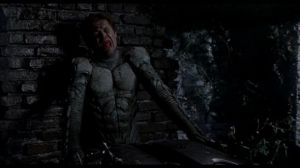
‘The Dark Knight’ breaks the superhero’s genre one rule, established in classic films like 1989’s ‘Batman’ and carried on to nearly-modern day ‘Spider-Man’ (2002) and ‘Batman Begins’ (2005): kill off your villain so the end is nice and tidy.
The Caped Crusader does toss the Clown Prince of Crime off the Pruitt building… only to catch him with his grappling hook, much to the Joker’s disappointment.
“Oh, you. You just couldn’t let me go, could you? This is what happens when an unstoppable force meets an immovable object. You truly are incorruptible, aren’t you? You won’t kill me out of some misplaced sense of self-righteousness. And I won’t kill you because you’re just too much fun. I think you and I are destined to do this forever.”
 Boom! That’s comics in a nutshell.
Boom! That’s comics in a nutshell.
Spider-Man doesn’t kill the Green Goblin in the comics (well he does, several, but some come back… and, you know, crazy Marvel stuff); they clash again and again and again. And there are very few foes that have been clashing longer in the comics than Batman and the Joker.
6. The White Knight Vs. The Dark Knight
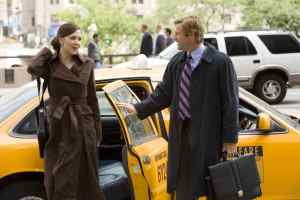 The real finale. The one we were promised when Gordon, Dent, and Batman meet on that rooftop in the first act.
The real finale. The one we were promised when Gordon, Dent, and Batman meet on that rooftop in the first act.
Things got dirty. And all three of these decent men in an indecent time were torn to shreds by the joker, but none more than tragic Harvey Dent.
“What happened to Rachel wasn’t chance. We decided to act! We three!”
Batman knows what’s up! Cause he’s the world’s greatest detective.
But Harvey Dent is the apparent loser in the room, having lost his fiance (and scared his face), with no knowledge that Bruce carried similar feelings for Rachel. 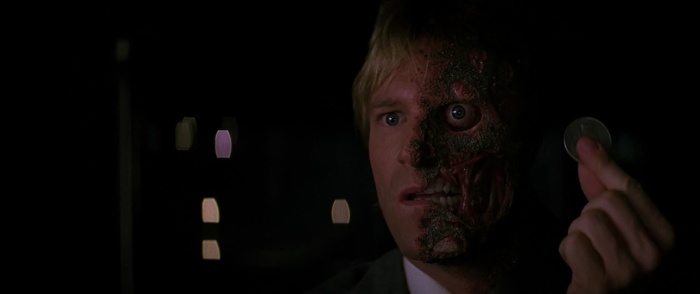
In the comics, Bruce Wayne blames himself for not revealing to Harvey Dent who he was. For not showing Dent who fought alongside him for the soul of Gotham. For remaining anonymous and letting Gordon and Dent take the brunt of mob vengeance.
In the movie, even in this immense time of crisis, Batman is able to vocalize the importance of Harvey Dent to Gotham; why he was chosen.
“Because you were the best of us! He wanted to prove that even someone as good as you could fall.”
So rests the soul of Gotham in these three-warriors-torn-asunder’s final moments together. Harvey “Two-Face” Dent deciding each of their fates with a flip of the coin.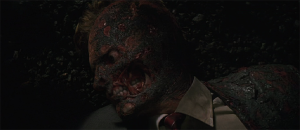
This scene completes the movie. Three young men with rose-color glasses are wrung through the shredder as a promise they made destroyed their partnership and their lives. Classic Nolan/Batman tragedy.




